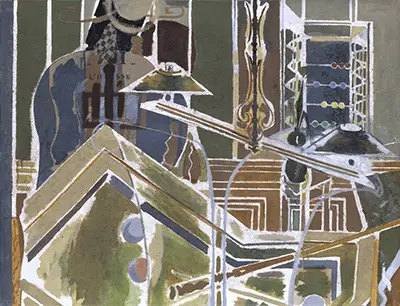The table is fully depicted in three of the larger paintings, and only partially shown in the four others. One of the major challenges faced by Braque in making these paintings is the depiction of the table without resorting to a traditional perspective.
The paintings are made with oil colours, with sand mixed in, to give a matte effect. Interestingly, Barque did not own a billiards table and was not a big fan of the game, though he did play occasionally.
The tables were depicted from different angles, which are probably meant to represent the view of the player.
These paintings hang in museums around the world, from Paris to London to Caracas. There are also a couple of them in the private collection of Claude Laurens, a Belgian architect. This series of paintings are considered to be Braque's final major works.
A French painter, draughtsperson, collagist, and sculptor, Georges Braque was the Father of Cubism. Along with Pablo Picasso, he developed Cubism.
The two worked together a lot and Braque is said to have claimed that he and Picasso had discussed things that no one else would ever understand.
Much before he developed Cubism, Braque originally worked in the Impressionist style of paintings. Then in the first years of the 20th century, he began to follow the short-lived movement of Fauvism, through which he later gradually developed Cubism.
Some of his interesting paintings include Maisons et Arbre, Le Viaduc de L'Estaque, and Violin and Candlestick.
Braque enlisted into the French army in 1914 as World War I made art impossible. He suffered a head injury and temporary blindness during the war and had to rest for a long time. He resumed his work before the end of the Great War, in 1916.


